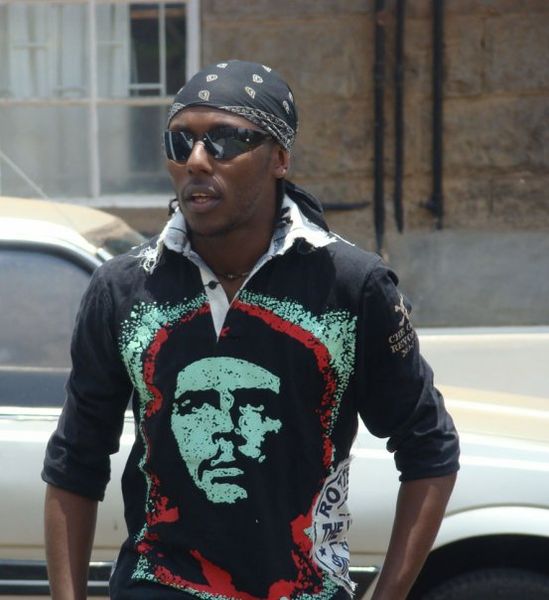Kenya
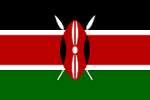
Kenya used to be called the pearl of Africa, because Kenyans could trade easily from its coastal location, especially with India and Arabia. The city of Mombasa, next to the Indian Ocean, is an important global trade centre.
Location and Landscapes

(c) wikicommons
Kenya is located in East Africa on the Indian Ocean. It is surrounded by Somalia and Ethiopia in the north, by Sudan and Uganda in the west, and by Tanzania in the south. The biggest part of Kenya is highland. During the rainy seasons it gets as cold as 10°C. During the warmer seasons the temperature stays around 25°C. Tea and coffee grow in the highlands. The two highest mountains in Africa are in Kenya: Mount Kenya, who was named by the people who live there, as the ‘holy mountain’, at 5,200m high is the second highest mountain in Africa. The equator runs through Kenya which is why Kenya once was covered with rainforests. Lake Victoria is a huge inland lake and stretches between Kenya, Uganda and Tansania. It is Africa’s largest lake. It is also known as “the Eye of the Rhino”.
Kilimanjaro, Africa’s highest Mountain
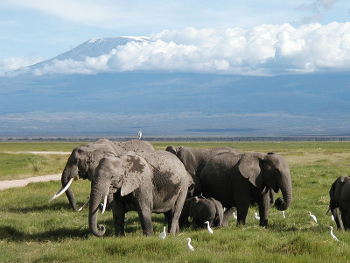
Africa’s highest mountain is Mount Kilimanjaro. The former vulcano consists of three vulcanic cones. From its base it rises to 5,895 metres and is so high, that it is covered with snow throughout the year. It is called “the roof of Africa”. The Kilimanjaro has been subject of many scientific studies which indicate that the climate change has caused the shrinking glaciers. The mountain is a climbing destination and offers seven trekking routes by which to ascend and descend Mount Kilimanjaro.
Nairobi, the Capital of Kenya
The capital city of Nairobi is in the middle of the country. The Kikuyu tribe settled in Nairobi and is the biggest tribe in Kenya. Nobody knows exactly how many people live in the city, whether it’s three or five million because more and more people come from the countryside areas and settle in the slums of Nairobi.
Nairobi is one of Africa’s largest, and most interesting cities. It is the safari capital of Africa, but the modern world has quickly caught up with the city. The great wilderness surrounds the modern capital. Just outside the city is Nairobi National Park, 113 sq kms of plains, cliffs and forest. The park is home to large herds of Zebra, Wildebeest, Buffalo, Giraffe and more. Rhino, Cheetah, and a large number of Lions are all found here, living wild within 20 minutes of the centre of town. The city has not lost its sense of the past, with an excellent museum and the historical home of Karen Blixen, author of Out of Africa open to visitors.
The Nairobi National Museum presents Kenya’s History, Nature, Culture and Contemporary Art in its entire splendor. Also within the grounds are the famous Snake Park, Botanical Gardens and Nature Trail.
Karen Blixen Museum, built in 1912, was home to Danish author Karen Blixen. Made famous by the Oscar Award winning film ‘Out of Africa’, based on Karen’s autobiography by the same title, the then farmhouse was established as a museum in 1986.
Nairobi is called the capital of slums. There are approximatly 2.5 million slum dwellers in about 200 settlements in Nairobi representing 60% of the Nairobi population and occupying just 6% of the land. Kibera is the biggest of the slums surrounding Nairobi. It is the biggest slum in Africa and one of the biggest in the world. It houses about 250,000 of these people. The Government owns all the land. 10% of people are shack owners and many of these people own many other shacks and let them out to tenants. The remaining 90% of residents are tenants with no rights. The average size of shack is 3.5 x 3.5 meters built with mud walls, a corrugated tin roof with a dirt or concrete floor. The cost is about KES 700 per month (Euro 10). These shacks often house up to 8 or more with many sleeping on the floor. 20 percent of the Kiberians have electrictiy. There are two main water pipes into Kibera, one from the municipal council and one from the World Bank. Residents collect water at EURO 1 per 20 litres.There are many tensions in Kibera, particularly tribal tensions between the Luo & Kikuyu, but also between landlord and tenant and those with and without jobs.
Peoples and Languages
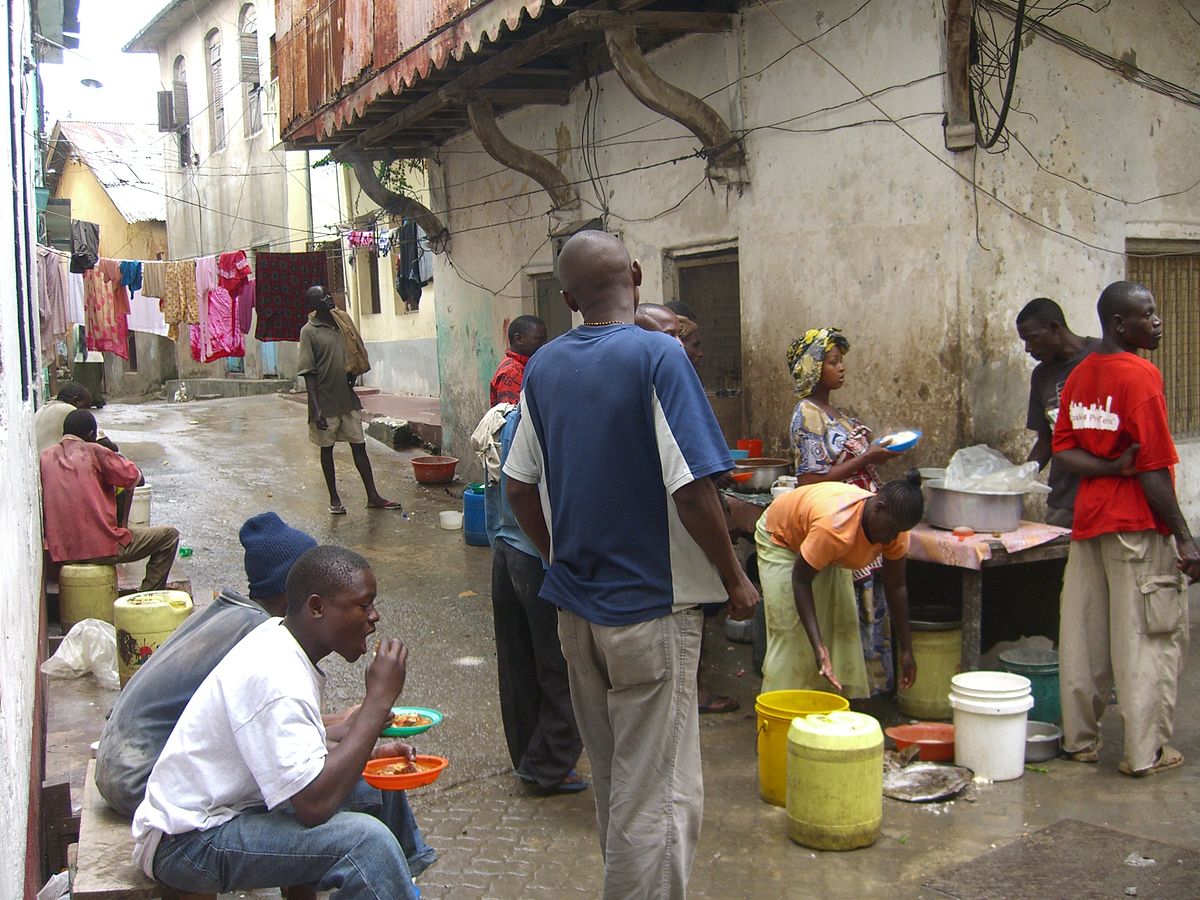
(c) Mard el Sur CCBYSA2.0
Kenya is home to more than 40 peoples. Most Kenyans live in the highlands. The capital Nairobi is in the centre of the highland. Its location between the Indian Ocean and Lake Victoria means that people from all over Africa and the Middle East have travelled and traded across it for centuries. This has created a diverse culture with many ethnic groups and languages like the Kikuyu and the Maasai. The Kenyans speak Swahili and English. The picture right shows merchants making a break at noon. Children are working on the markets to contribute to the income of their families. The Maasai tribe wander through the plains of the Rift Valley in the middle of Kenya. They are called ‘Guardians of the Soil’. They contribute to the balance of the fragile ecosystems. In Kenya the main language is Swahili and often English.
The History of Kenya
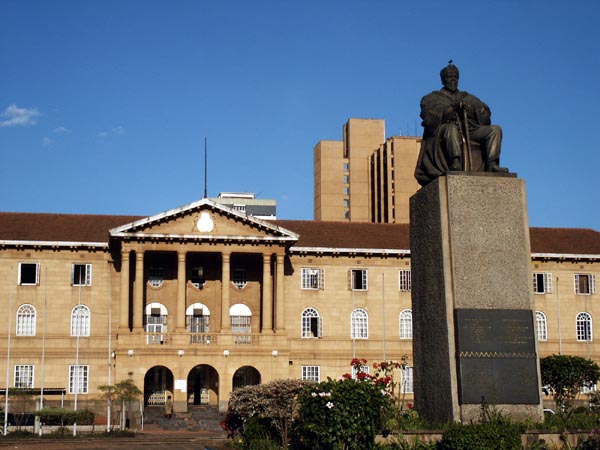
A few years later, German missionaries and African researchers advanced to the inland.
For a short time a German protectorate over the Sultanate Witu was established, before it was handed over to Great Britain. They forced the Sultan of Sansibar to give up his territory on the African coast and established administrative control of the country.
Today’s capital of Nairobi was created in 1899 as a railroad camp on the Ugandan Railway which travelled from Mombasa to Lake Victoria. In 1920 British East Africa was formally declared a British Crown Colony of Kenya, thus beginning the land grab of Kikuyu.
British veterans from the First World War were allocated the Kenyan highland as a settlement area. The united peoples established the first opposition movements. The Kikuyu-Riot, also known as the “Mau-Mau-Conspiracy”, was defeated, and its leader Jomo Kenyatta was jailed for many years. After his release, Kenyatta founded the Kenya African National Union (KANU), which won the vote three years later. Jomo Kenyatta took over the position of Prime Minister and on 12th December 1963 Kenya was officially declared as independent.
After Kenya became independent from Europe, civil war broke out in the border regions between Somalia, Ethiopia and Sudan. The town Dabaab is testimony to this story. Dabaab means ‘the town of the lost people’, and has now grown into a city inhabited only by refugees.
The Green Belt Movement
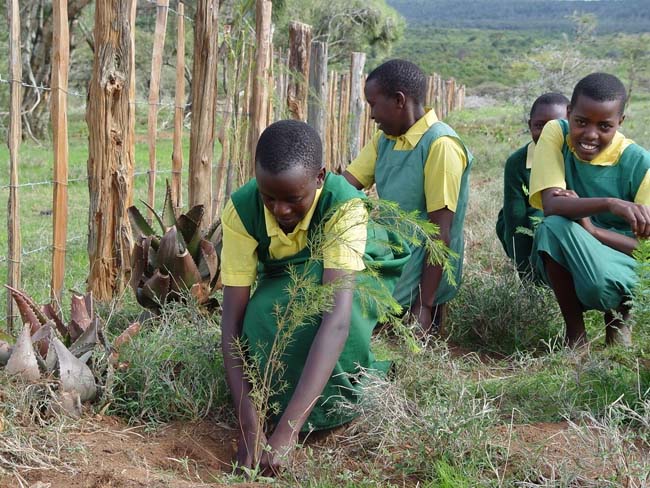 At the time of British colonial rule, one third of Kenya was covered by forest. Much of the forest has been destroyed due to intensive farming. The desertification of the once fertile areas increased dramatically. Because of this, the “Green Belt Movement” began in Kenya no more than twenty years ago.
At the time of British colonial rule, one third of Kenya was covered by forest. Much of the forest has been destroyed due to intensive farming. The desertification of the once fertile areas increased dramatically. Because of this, the “Green Belt Movement” began in Kenya no more than twenty years ago.
Wangari Mathaai was the pioneer of this environmental organisation, and was known as the unbending spirit. She began to call women out of their districts to plant trees in order to save the country from desertification and to preserve the community for future generations.
For more information see Wangari Mathaai
Safari in Kenya
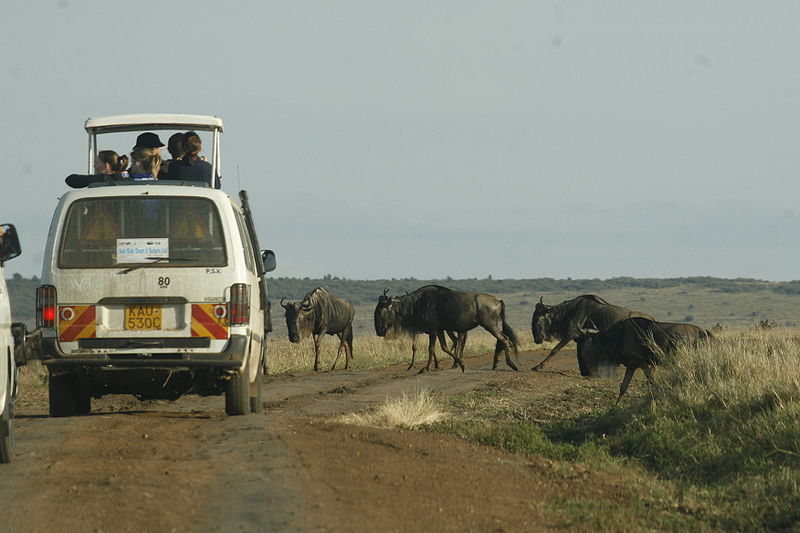 Safari in Swahili means ‘travel’. In Kenya there are huge national parks and game reserves like the Masai Mara, the Tsavo and the Amboseli National Park. The Maasai Mara national Reserve, also known as “The Mara,” is the venue for the most astounding wildlife spectacle on earth. Every year during the great migration an estimated 2.5 million animals make a round-trip journey of 2,000 kilometers across the Serengeti ecosystem between Tanzania and Kenya. Similarly, the Serengeti, which is contiguous with The Mara to the south, is one of Africa’s truly untamed wildernesses, with seemingly endless expanses of swaying savannah where plains herds graze and lions and cheetah maintain a vigil from their lookout kopjes.
Safari in Swahili means ‘travel’. In Kenya there are huge national parks and game reserves like the Masai Mara, the Tsavo and the Amboseli National Park. The Maasai Mara national Reserve, also known as “The Mara,” is the venue for the most astounding wildlife spectacle on earth. Every year during the great migration an estimated 2.5 million animals make a round-trip journey of 2,000 kilometers across the Serengeti ecosystem between Tanzania and Kenya. Similarly, the Serengeti, which is contiguous with The Mara to the south, is one of Africa’s truly untamed wildernesses, with seemingly endless expanses of swaying savannah where plains herds graze and lions and cheetah maintain a vigil from their lookout kopjes.
Talking Clothes
Kenyan women are shrouded in Kangas, like cloaks or wraps, which have colourful borders like feathers, hence their name Kanga, which means guinea fowl. Sayings are printed on to the plain wrap cloths so you can tell if a woman is in love or which political party they vote for. This is the way women “speak” with their friends, husbands and families. Earlier they also used to “talk” with the British colonial rulers. Seditious slogans against the british colonial communication were printed on the Kangas. The English censored the women and temporarily banned Kangas.
Kenia and the African School-System
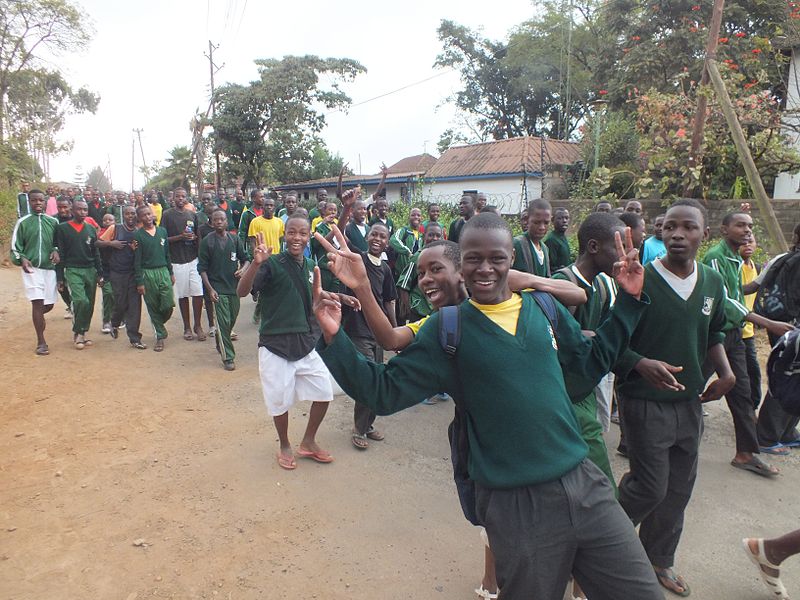 There is a good education system in Kenya. Schools were set up in rural areas and universities, which can measure up to European standards, have been built in the towns. School is free but many children are too busy to go to classes. Kenya is one of the African countries with the lowest level of illiteracy.
There is a good education system in Kenya. Schools were set up in rural areas and universities, which can measure up to European standards, have been built in the towns. School is free but many children are too busy to go to classes. Kenya is one of the African countries with the lowest level of illiteracy.
Festivals in Kenya
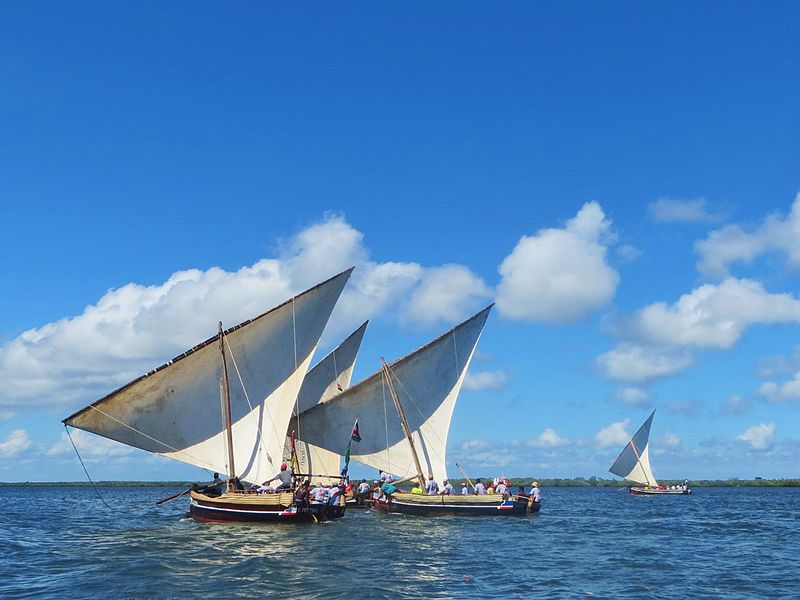
Kenya Today
Kenya is a beautiful country, with stunning beaches and a large number of wildlife parks and reserves. The Kenians have become one of Africa’s main centers of the safari industry. Visitors also come to experience the unique cultures of Kenya’s peoples. But there are also some problems waiting to be overcome. Poor Kenyans live in terrible conditions, the health system has to be improved, as well as the access to fresh water. And also not all families can send their children to school, they simply don’t have the money to pay for school uniforms and books. This is why children often don’t finish school but instead start working. Another problem are the forests. In former times Kenya was a green country with tropical woods. During the last 20 years half of the woods vanished due to the growing population. Millions of trees have been planted since Wangari Maathai, “the mother of the trees” initiated the Green Belt Movement. The future will show, if But will it be enough to stop deforestation?
Kenya’s Storytellers
“Here I am, where I’m supposed to be”. This was written by Karen Blixen about Kenya in her novel ‘Africa, dark, enticing World’, which was published in 1937. The novel is based on true incidents of her time in Africa. It was around the time when the British ruled over Kenya.
Karen Blixen had a farm at the foot of the Ngong Mountains. She grew coffee on it, but the ground was unsuitable for coffee plants. She could have saved the farm by changing to cattle breeding and crop cultivation, but that would be at the expense of the black farmers as she’d have to take pasture from them. She wrote, “I couldn’t forget that until recently, the natives of the country had undisputedly occupied their land and had heard nothing from the whites or their laws”. Blixen’s considerate attitude towards the white settlers made her unpopular. She had to quickly give up her farm and move back to Europe. You can still visit her house on the outskirts of Nairobi today.
Thirty years after Karen Blixen’s departure, an independent Literature scene has developed. Most of the authors write in English so that they can also become well known in Europe. In Kenya authors such as Ngugi wa Thiong’o and Meja Mwangi are read in schools. Of course most people read the same things that we do – romance novels, crime fiction, fantasy and adventure stories. Teenagers are also particularly fond of the Harry Potter series.
The most famous authors in Kenya are also translated into German and their books are available in many German libraries.
Author and university lecturer Ngugi wa Thiong’o has campaigned for Kenyan schoolchildren to learn not only classic English literature but also the stories of their own peoples such as the Kikuyu. Ngugi wa Thong’os stories are part of the school curriculum in Kenya.
For more see the Childhood biography from Ngugi wa Thiong’o
J. Lemasolai Lekuton is a member of the Massai and wrote his first biography about the life of the proud nomadic people. He began as a cattle herder and after an exemplary carreer, landed a job in the House of Representatives in Kenya.
More at Biographies
Meja Mwangi tells about life in Kikuyu, at a time when his people fought against the English ruling colonies. His brother was a resistance fighter and the hero of Meja Mwangi’s childhood.
More at Kariuki and his white Friend
Binyavanga Wainaina became famous with his short story Discovering Home. Binyavanga Wainaina visited schools in Nakuru and Nairobi and studied business at the University of Transkei in the Ostkap province. In Kenya in 2003 he founded the literature magazine Kwani? with colleagues, which roughly translated, means Is anything wrong?
Wahome Mutahi wrote under the pseudonym of Whispers. His book How to become a Kenyan was very popular because he made a joke about the ‘post-colonial’ attitude of himself and his fellow man.

